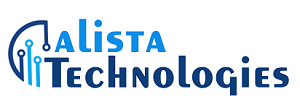
The advantages of integrating your accounting software with other business tools
In the digital age, the integration of business tools and software has become a cornerstone for operational efficiency and strategic insight. Particularly, the integration of accounting software with other business tools—such as customer relationship management (crm) systems, inventory management, payroll services, and e-commerce platforms—can significantly enhance a company’s financial management and overall business performance. Despite its importance, the full spectrum of benefits offered by such integration often remains underexplored. This blog post delves into the advantages of integrating your accounting software with other business tools, emphasizing insights and operational efficiencies that go beyond the conventional understanding.
Seamless data flow and reduced manual data entry
The direct transfer of data between systems is perhaps the most immediate benefit of integration. For instance, sales data from an e-commerce platform can automatically update in the accounting software, eliminating the need for manual data entry. This seamless data flow not only saves time but also significantly reduces the potential for human error. According to a report by ibm, data entry errors cost businesses in the u.S. Alone over $3 trillion annually, highlighting the financial impact of manual processes.
Enhanced financial visibility and decision-making
When accounting software is integrated with other business tools, it provides a holistic view of the company’s financial health. For example, integrating with a crm system can offer insights into how sales activities and customer relationships impact revenue and cash flow. This comprehensive financial visibility supports more informed strategic decision-making, enabling businesses to identify trends, pinpoint inefficiencies, and capitalize on opportunities more effectively.
Streamlined operations and improved productivity
The automation of workflows across different business functions is a significant advantage of integration. Tasks that once required manual coordination between departments, such as invoicing, inventory updates, and payroll processing, can now be automated, ensuring that all systems are synchronized in real-time. This streamlining of operations not only improves productivity but also allows staff to focus on higher-value activities, such as analysis and strategy.
Better inventory management and cost control
For businesses that manage physical inventory, integrating accounting software with inventory management tools can dramatically improve inventory tracking and cost control. This integration allows for real-time updates to inventory levels as sales occur, which in turn, updates cost of goods sold (cogs) and other relevant financial metrics in the accounting software. Such real-time information helps businesses maintain optimal inventory levels, reduce holding costs, and improve profit margins.
Improved compliance and risk management
Integrating accounting software with payroll and hr systems can significantly enhance compliance with tax laws and employment regulations. Automated calculations and reporting can reduce the risk of errors that could lead to regulatory penalties. Furthermore, having a unified system helps in maintaining better records for audits and ensures that financial practices comply with accounting standards and legal requirements.
Enhanced customer experience
Although not immediately obvious, the integration of accounting software with other business tools can lead to improved customer experiences. For instance, integration with crm and e-commerce platforms can streamline billing and payment processes, offer more accurate and timely delivery of goods and services, and provide better customer service through quicker access to financial information. Happy customers are more likely to become repeat customers, contributing positively to the business’s bottom line.
Conclusion
The integration of accounting software with other business tools represents a strategic investment that can unlock significant efficiencies, insights, and competitive advantages. By facilitating seamless data flow, enhancing financial visibility, streamlining operations, and improving compliance and customer satisfaction, businesses can not only optimize their financial management but also position themselves for sustainable growth. As technology continues to evolve, the potential for integration will only expand, offering businesses new opportunities to harness the power of their data for strategic success.






